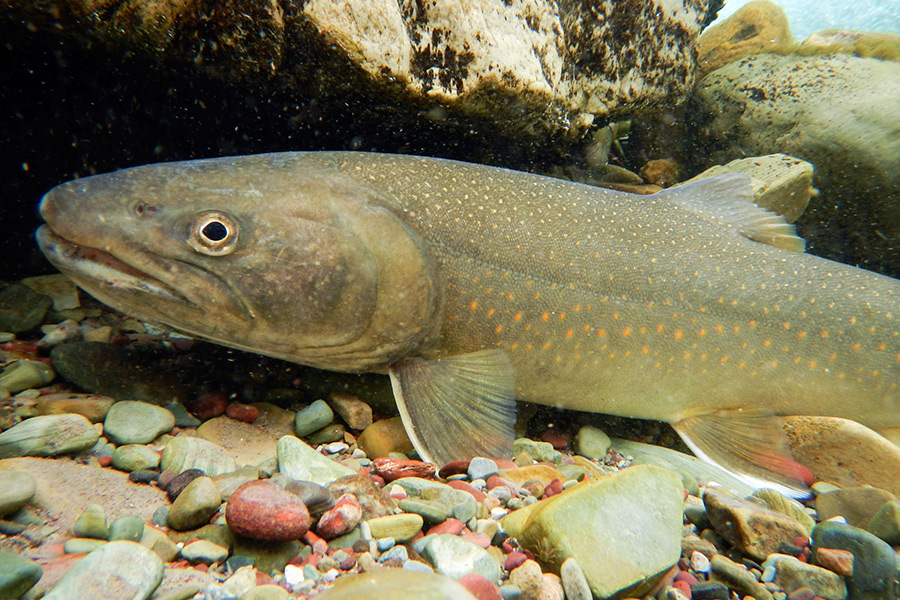The U.S. Fish and Wildlife Service released its final Bull Trout Recovery Plan Sept. 28, shifting its aim toward managing specific environmental threats rather than managing the trout populations themselves.
The final plan offers little variation from the draft plan proposed one year ago, drawing criticism from conservation groups who say the efforts are inadequate.
Bull trout were listed under the Endangered Species Act as “threatened” in 1999, and the plan to recover the species is 15 years in the making. It recognizes the many challenges that climate change presents to the recovery plan, and tries to be realistic in its blueprint for recovering a species dependent on cold-water streams. In doing so, it concedes that some populations will wink out, prompting outcry from the leader of one environmental group who called the plan an “extinction plan.”
The proposed plan’s overall strategy calls for widespread population distribution throughout six geographical areas in the Northwest, and would achieve that by minimizing threats from non-native fish, such as invasive lake trout, improving bull trout habitat and continuing to study the species in order to identify other stressors.
Unlike other recovery plans, however, it does not rely on target numbers of adult bull trout as a barometer of success, raising concerns in the conservation community and prompting threats of legal action.
Instead, the plan focuses on alleviating specific threats to the species’ habitat and genetic diversity, while accepting that as much as 25 percent of the trout populations will face extirpation.
Lead biologist Stephen Duke said the adverse effects of logging, mining and grazing have mostly been addressed since the bull trout was listed as a threatened species. When the remaining problems facing bull trout are addressed, they should achieve stability in the six recovery areas designated in Washington, Oregon, Idaho, Montana and Nevada.
Michael Garrity, executive director of Alliance for the Wild Rockies, said of the plan, “this isn’t a recovery plan, it is an extinction plan.” Alliance for the Wild Rockies, along with the Friends of the Wild Swan, sued the Fish and Wildlife Service last year, and promised to file suit again if the population criteria wasn’t included in the plan.
